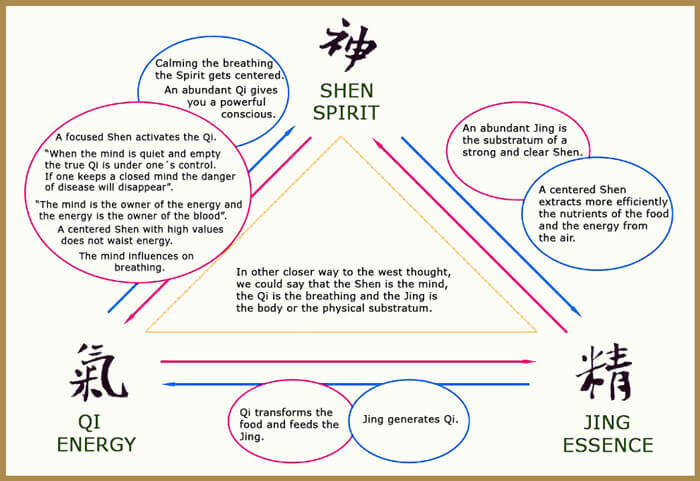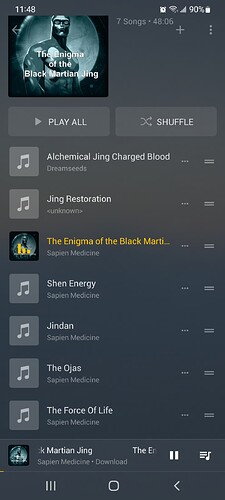A very famous example used to explain the three treasures in simple words is oft used in Daoist Alchemical texts.
Take the example of cooking a bowl of rice, simple right? Alchemy here is the transformation of raw rice to cooked rice which is usable by the body for energy.
- The preparation, the pre-requisite, the basis or groundwork to bring about this transformation is Jing.
- The very process of this transformation is Qi.
- The cost of this process - or the expense - may be viewed as Shen.
In the example of cooking rice, you do a bunch of prep work - get the rice, wash the rice, light the fire, place the uncooked rice on the fire and start cooking - all of this is Jing.
Now the actual process of heating up cold water, generating steam, transforming uncooked rice to soft, cooked, hot rice is Qi.
Now steam escapes, water gets used up, all of this expense is Shen. One can accelerate the alchemy of cooking rice by say increasing the fire (aka spend more Jing to generate more Shen). So, what you spend and how much depends on what you want to achieve.
Now, the teacher asks his disciple: What brings about the alchemy here? Is it the fire, the water, the cooking pot, rice, or the steam?
The wise disciple replies: All of them working synergistically together is what brings about the alchemy. Not one, not two, but all three working together.
The traditional way of the Daoist is one where one prepares the physical body and then the energetic body, finally marching toward the spirit (Jing → Qi → Shen). However, there are also Shen-centric schools that teach purely Shengong (Buddhist influence is dominant here) where the body is viewed through the angle of being impermanent, so there is little to no effort spent on perfecting the physical organ. The focus is solely on the Spirit aka Shen. Some of these schools (not all) believe that Shen automatically promotes a healthy body and mind as well and hence focusing on Shen alone will grant the benefit of Jing and Qi as well, but this is the path of the renunciate and may not work well practically for most common folks. Ramana Maharshi, the great non-dualist is a good example of Shen-only cultivation - he was frail, had to be operated for cancer, but none of it even registered with him as he gave no cognizance to his body or mind, and resided in a state of non-duality, blissed out, undisturbed, and body, its afflictions, so-called pain, etc. failed to even register with him. Again, not easy for 99% of the folks to go this route.

 and am sure I am not the only one with these questions. Thank you in advance.
and am sure I am not the only one with these questions. Thank you in advance.